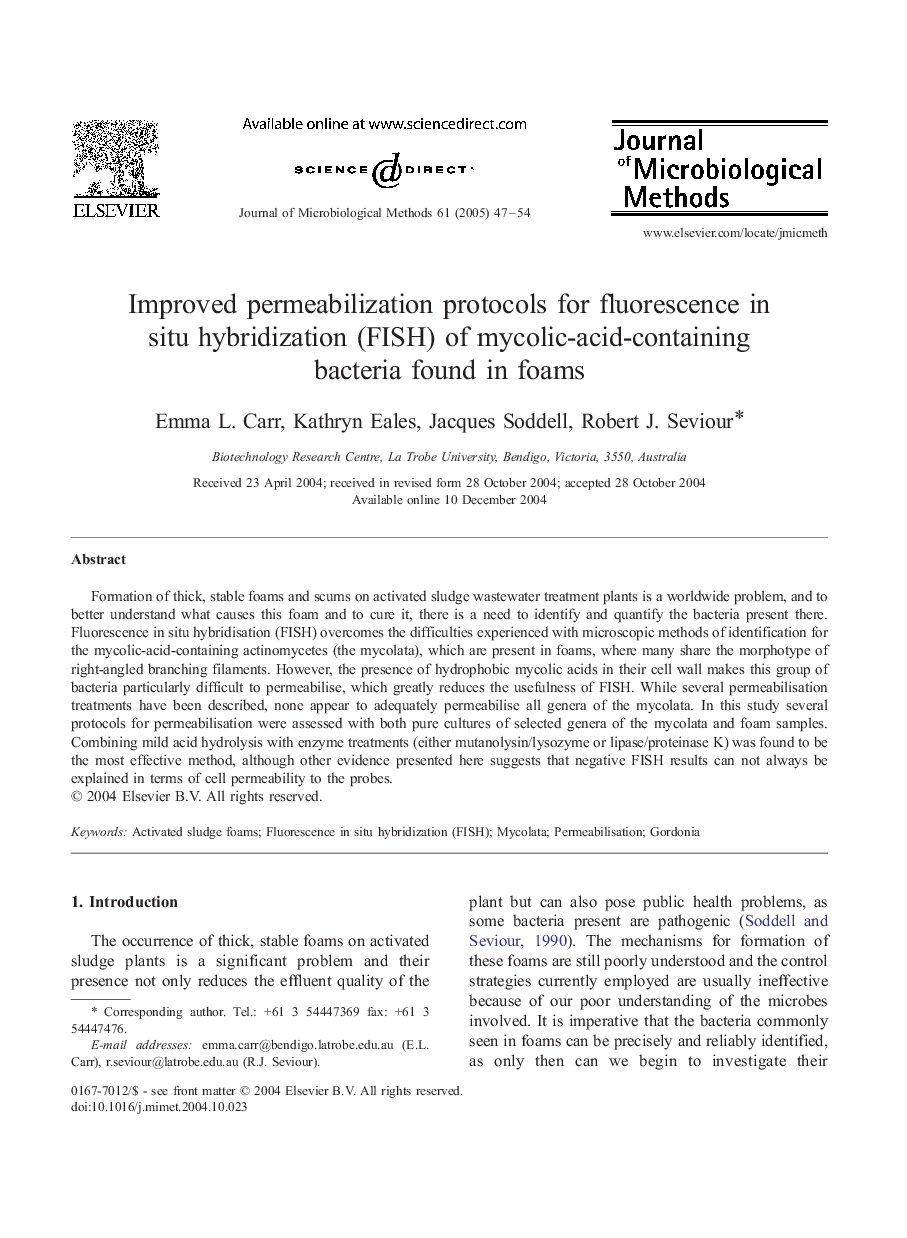| Article ID | Journal | Published Year | Pages | File Type |
|---|---|---|---|---|
| 10889913 | Journal of Microbiological Methods | 2005 | 8 Pages |
Abstract
Formation of thick, stable foams and scums on activated sludge wastewater treatment plants is a worldwide problem, and to better understand what causes this foam and to cure it, there is a need to identify and quantify the bacteria present there. Fluorescence in situ hybridisation (FISH) overcomes the difficulties experienced with microscopic methods of identification for the mycolic-acid-containing actinomycetes (the mycolata), which are present in foams, where many share the morphotype of right-angled branching filaments. However, the presence of hydrophobic mycolic acids in their cell wall makes this group of bacteria particularly difficult to permeabilise, which greatly reduces the usefulness of FISH. While several permeabilisation treatments have been described, none appear to adequately permeabilise all genera of the mycolata. In this study several protocols for permeabilisation were assessed with both pure cultures of selected genera of the mycolata and foam samples. Combining mild acid hydrolysis with enzyme treatments (either mutanolysin/lysozyme or lipase/proteinase K) was found to be the most effective method, although other evidence presented here suggests that negative FISH results can not always be explained in terms of cell permeability to the probes.
Related Topics
Life Sciences
Biochemistry, Genetics and Molecular Biology
Biotechnology
Authors
Emma L. Carr, Kathryn Eales, Jacques Soddell, Robert J. Seviour,
